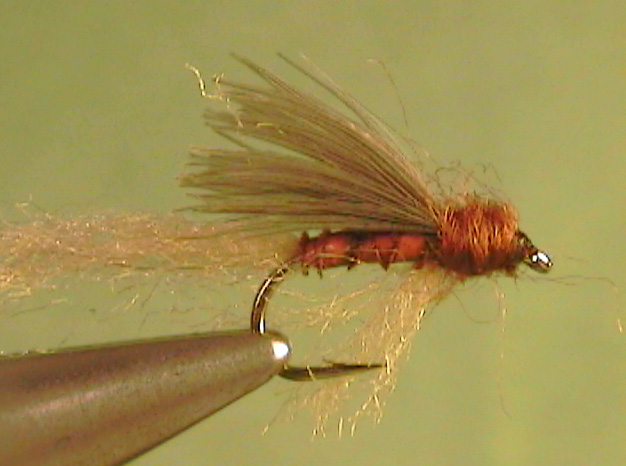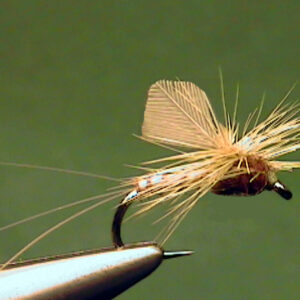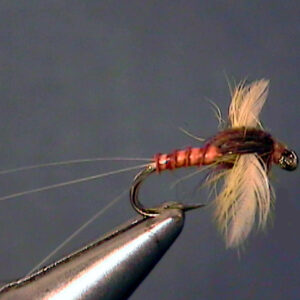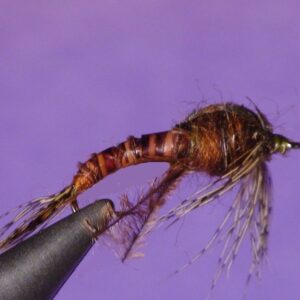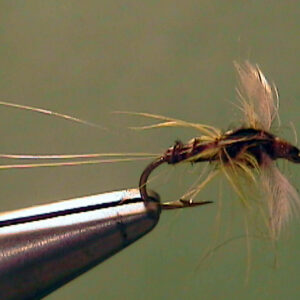Hook Size: 12/14
The Perfect Fly Hendrickson and Male Red Quill Emerger with trailing shuck is an excellent imitation of the actual emerger as it sheds its skin near the surface of the water as it changes into a dun. Hendricksons and Red Quill Emerger emerge in the afternoons. It looks more like the dun than the nymph. The fly should be fished just under the surface or in the surface skim.
The Ephemerella subvaria nymphs emerge in the calmer, smoother areas of the stream.
Like many other crawler mayfly nymphs, these move from the moderate flowing water
where the live most of the time to nearby slower moving water to hatch. The trout may be
located in the current seams adjacent to or directly below these slow moving areas of
water.
The Hendricksons/Red Quills usually hatch when the water is between 50 and 55
degrees. The nymphs swim to the surface to hatch using a wiggle motion of their bodies.
They may repeat this process several times (at least in my aquarium) prior to hatching. I
suppose this depends on the weather and water conditions. It is logical to assume that it
is during this time that they are most subject to being eaten by the trout.
Presentation:
Emerger imitations should be presented in the afternoons when the hatch begins in the
slow to moderately moving water where these mayflies hatch. The emerger fly should be
placed close enough to the current seams and the edge of pockets that the water will
take the fly on downstream, but not in the fast water of runs. Don’t overlook the riffles.
These mayflies can hatch in the small, miniature pools (pockets) of the riffles as well as
the larger areas of slow to moderate water.
You can imitate the action of the emerging nymph by swimming the imitation from the
bottom to the surface using short twitches of the rod. This action can be repeated if you
allow the emerger imitation to fall back to the bottom. Some anglers swear this action is
necessary but we disagree. We have had plenty of action using a dead drift. We mention
this because twitching is the traditional way the emerger imitations are presented. Let the
trail and error method tell you which type of presentation is the most effective.
This is the perfect hatch to use a trailing shuck version (dun with the nymphal shuck still
attached) of the emerger. We have experienced action from both types of emerger
imitations – the emerging nymph and the trailing shuck dun. Again, trial and error may be
the best way to determine which type of emerger imitation to use. Once you find a hatch
underway, our experience is that there usually isn’t much of a problem catching trout on
either type.
Copyright 2003 James Marsh
